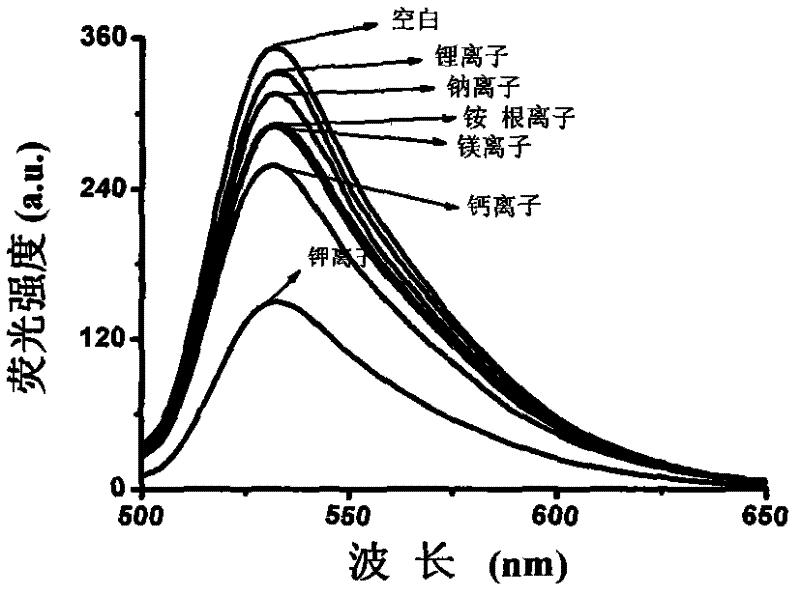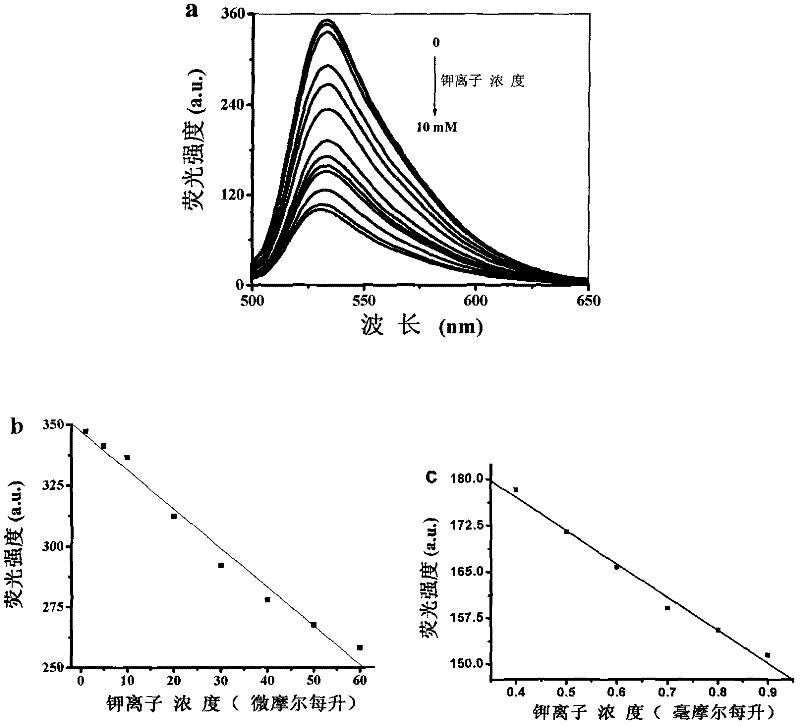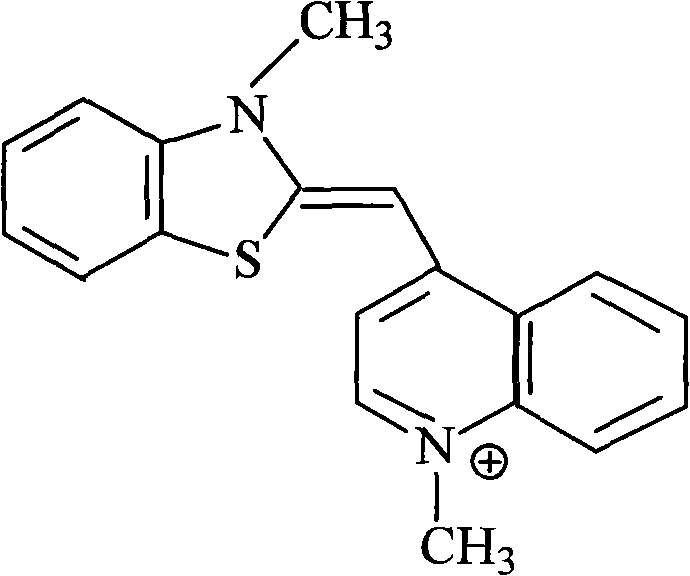Fluorescence detection method of potassium ion
A technology for fluorescence detection and potassium ions, which is applied in the field of fluorescence detection of potassium ions, can solve the problems of high detection cost, limited practical application, low sensitivity and selectivity, and achieve high sensitivity, save detection time, and simplify operation steps.
- Summary
- Abstract
- Description
- Claims
- Application Information
AI Technical Summary
Problems solved by technology
Method used
Image
Examples
Embodiment 1
[0029] Add 2mL buffer (50mM Tris-HCl, pH 7.40) to the cuvette, add 5μL 4×10 -5 Mthiazole orange, 5 μL 6 × 10 -5 M Potassium ion-specific DNA and 5 μL 0.4M potassium chloride were mixed evenly and reacted at 25°C for 4 minutes, and the fluorescence test was performed. At this time, the final concentration of each substance was: [thiazole orange]=100 nM, [potassium ion-specific DNA]=150 nM, [potassium ion]=1 mM.
[0030] The fluorescence spectra before and after the addition of potassium ions are shown in figure 1 As shown, before the addition of potassium ions, the fluorescence intensity at the maximum emission wavelength is 353.06, and after the addition of potassium ions, the fluorescence intensity at the maximum emission wavelength is 151.42, so the present invention can quantitatively detect potassium ions.
Embodiment 2
[0032] Potassium ions are replaced by other metal cations such as calcium ions, magnesium ions, lithium ions, ammonium ions, and sodium ions repeat the steps of Example 1, and the results are as follows figure 1 shown. Calcium ions, magnesium ions, lithium ions, ammonium ions, and sodium ions can also reduce the fluorescence intensity, but compared with potassium ions, the reduction is very small. It shows that the present invention is less interfered by other metal cations and has better selectivity.
Embodiment 3
[0034] Change the potassium ion concentration into the potassium ion of different concentrations and repeat the steps of Example 1, the results are as follows figure 2 shown. It shows that the present invention can quantitatively detect potassium ions of different concentrations. When [thiazole orange]=100nM, [potassium ion-specific DNA]=150nM, the concentration of potassium ion is proportional to the fluorescence intensity in the range of 1-60μM and 400-900μM.
PUM
 Login to View More
Login to View More Abstract
Description
Claims
Application Information
 Login to View More
Login to View More - R&D
- Intellectual Property
- Life Sciences
- Materials
- Tech Scout
- Unparalleled Data Quality
- Higher Quality Content
- 60% Fewer Hallucinations
Browse by: Latest US Patents, China's latest patents, Technical Efficacy Thesaurus, Application Domain, Technology Topic, Popular Technical Reports.
© 2025 PatSnap. All rights reserved.Legal|Privacy policy|Modern Slavery Act Transparency Statement|Sitemap|About US| Contact US: help@patsnap.com



